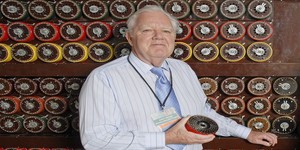
The National Museum of Computing (TNMOC) has announced the receipt of a £50,000 donation from software development firm Ensoft, which it is to use to create emulators for its Learning Programme.
Situated in Bletchley Park, wartime home of the Codebreakers, The National Museum of Computing plays host tot he world's largest collection of historic computers, including rebuilds of the world's first electronic computer, Colossus, and the world's oldest working digital computer, the Harwell Dekatron. The charitable organisation is currently running through a £1 million matched-funding donation from a private benefactor, in which any funds raised up to the total will be doubled. As a result the news that Ensoft is providing £50,000 is extra welcome, as it will be doubled to £100,000.
Ensoft, a 60-person UK company specialising in networking software, explained the reasoning behind its donation: 'There’s a great deal of excitement in the technology industry in Britain, and it’s critical to inspire young people to thrive confidently in the digital future,' claimed chair John Cooper. 'The National Museum of Computing’s unparalleled resource of working machines communicates uniquely how pivotal the UK has been in the evolution of computing so far, and helps to motivate the next generation to create the future boldly. Indeed, our own employees have gained great inspiration from visiting, and we would encourage every technology company to visit and support the development of TNMOC.'
The funding has been earmarked for the development of software-based emulators, allowing visitors who have experienced programming on the classic machines as part of the Museum's Learning Programme to continue their work after they have left. 'We’ve often thought about creating emulators to let them experience coding machines after their visits and this funding will help in these developments,' explained learning co-ordinator Chris Monk. 'The ability to perform low-level programming is now a part of the National Curriculum, so we know that programming computers from the 1950s, when computer languages were just emerging, will be very popular with our visiting schools.'
More information on the National Museum of Computing is available on the official website.
Situated in Bletchley Park, wartime home of the Codebreakers, The National Museum of Computing plays host tot he world's largest collection of historic computers, including rebuilds of the world's first electronic computer, Colossus, and the world's oldest working digital computer, the Harwell Dekatron. The charitable organisation is currently running through a £1 million matched-funding donation from a private benefactor, in which any funds raised up to the total will be doubled. As a result the news that Ensoft is providing £50,000 is extra welcome, as it will be doubled to £100,000.
Ensoft, a 60-person UK company specialising in networking software, explained the reasoning behind its donation: 'There’s a great deal of excitement in the technology industry in Britain, and it’s critical to inspire young people to thrive confidently in the digital future,' claimed chair John Cooper. 'The National Museum of Computing’s unparalleled resource of working machines communicates uniquely how pivotal the UK has been in the evolution of computing so far, and helps to motivate the next generation to create the future boldly. Indeed, our own employees have gained great inspiration from visiting, and we would encourage every technology company to visit and support the development of TNMOC.'
The funding has been earmarked for the development of software-based emulators, allowing visitors who have experienced programming on the classic machines as part of the Museum's Learning Programme to continue their work after they have left. 'We’ve often thought about creating emulators to let them experience coding machines after their visits and this funding will help in these developments,' explained learning co-ordinator Chris Monk. 'The ability to perform low-level programming is now a part of the National Curriculum, so we know that programming computers from the 1950s, when computer languages were just emerging, will be very popular with our visiting schools.'
More information on the National Museum of Computing is available on the official website.

MSI MPG Velox 100R Chassis Review
October 14 2021 | 15:04








Want to comment? Please log in.